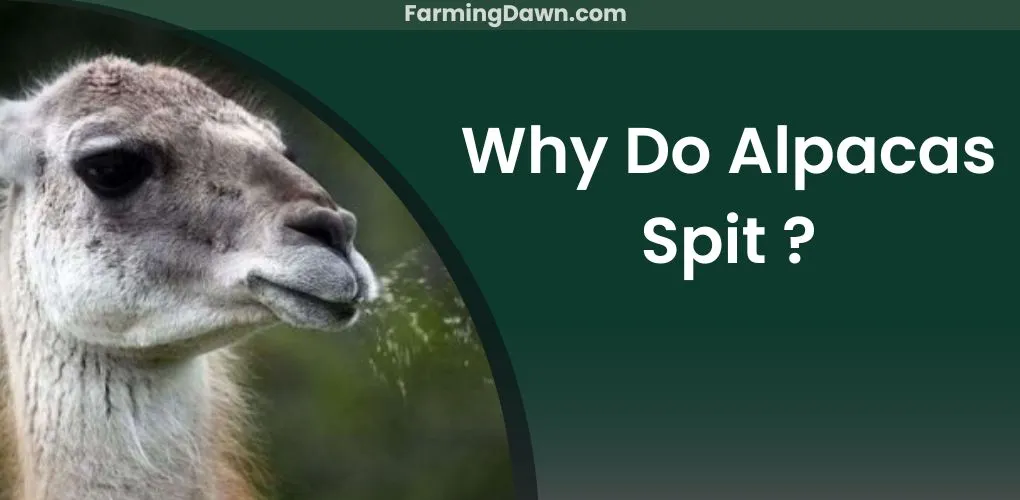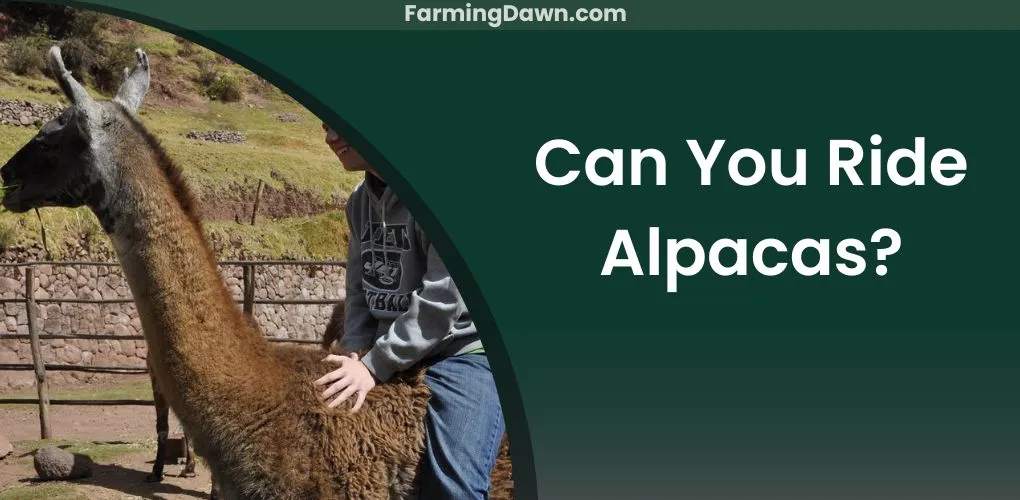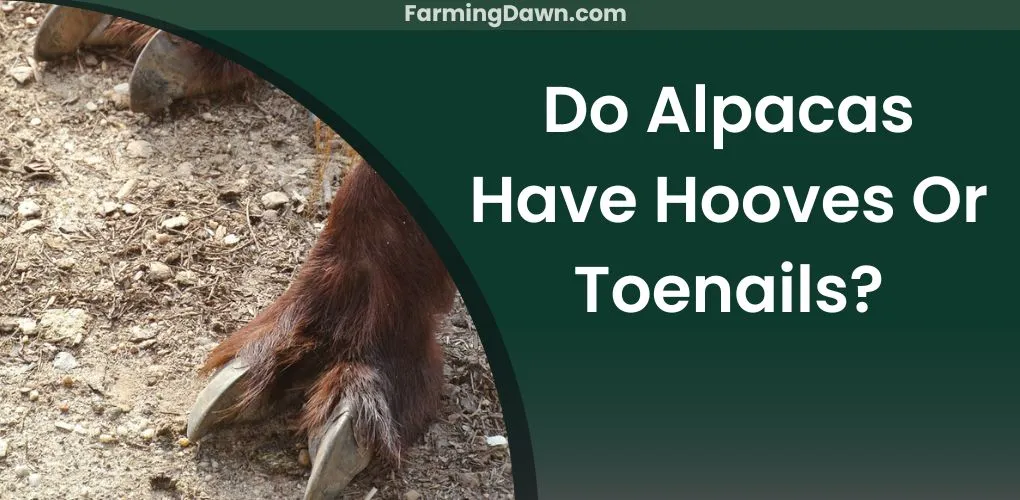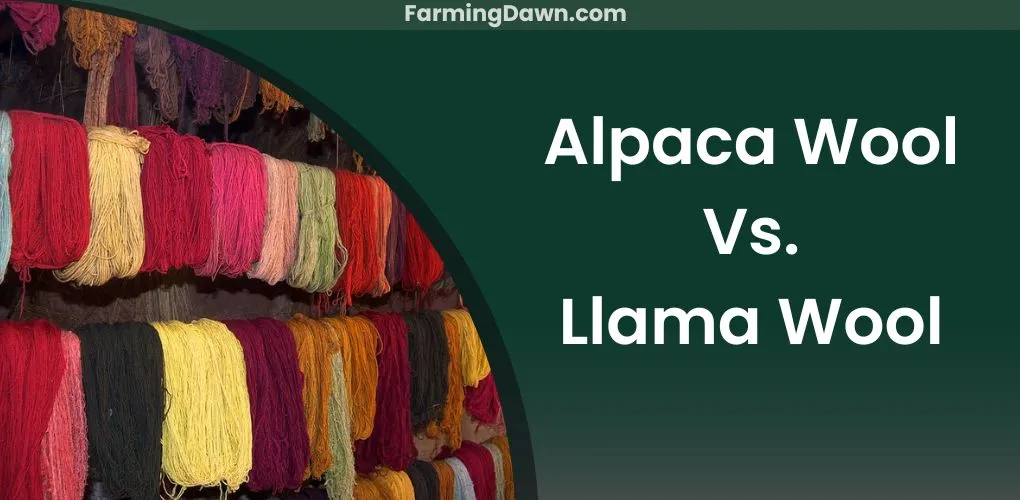When you think of alpacas, do visions of cute and cuddly animals come to mind? Well, if not, then it may be time for a reality check. Alpacas are known for their spitting! But why do alpacas spit? It’s a behavior that has puzzled many people over the years…until now. Today, I’ll explore the reasons why alpacas spit and how understanding the root of the problem could lead us to better ways of managing our beloved furry friends.
But before understanding the reasons of alpacas spit, we have to understand the alpaca spit.
What Is Alpaca And Llama Spit?
Alpacas and llamas are both members of the camel family, but they have different habits when it comes to spitting. Alpaca spit is a unique form of communication that has been studied for its significance in their behavior. While alpacas and llamas can both produce saliva forcefully from their mouths, the two animals do not share the same purpose or meaning behind their spittle.
Alpaca spit facts show us that this ancient animal uses its saliva as a means of establishing dominance over other herd members. This type of aggression may be seen among adult males during the breeding season, or between females who are competing for resources such as food or shelter.
Do alpacas spit to show dominance? Absolutely! In some cases, alpacas often use this method to establish hierarchy within their social structure while simultaneously warning other animals away from them without resorting to harsher methods like fighting or biting.
Furthermore, studies have shown that alpaca spit serves an additional purpose. Their spit acts as a way of communicating with each other about potential dangers in the area or changes in the environment around them. This behavior allows them to keep watch while remaining alert at all times.
Alpacas Spit For A Variety Of Reasons
Alpacas spitting is like a silent dance, with each spit carefully choreographed. It’s an intriguing behavior that has captivated humans for centuries, and one that continues to fascinate today. But why do alpacas spit? Well, there are many reasons why alpacas might be moved to spiting.
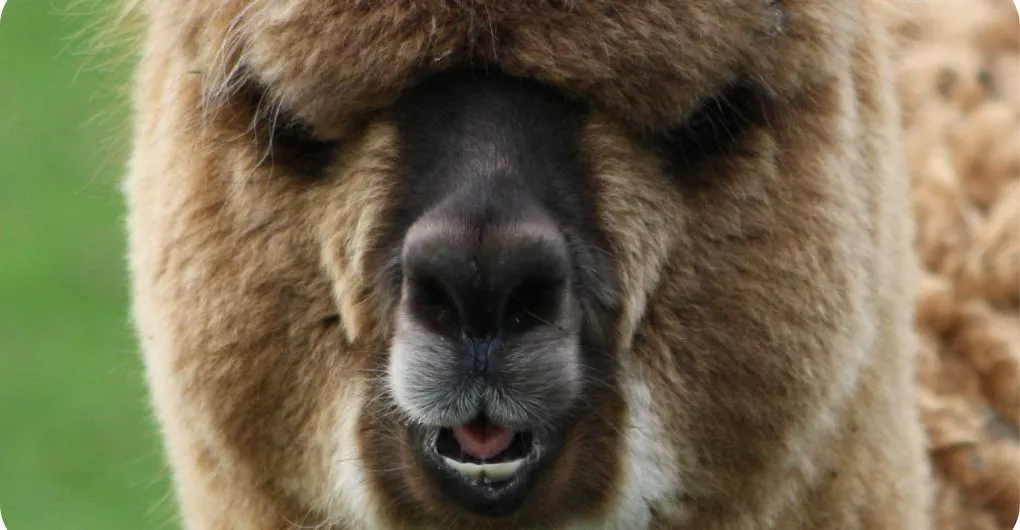
Alpacas can use their saliva as:
- A form of communication or defense mechanism.
- They may also spit if they feel threatened or stressed.
- They will often spit at other animals in the herd to establish dominance or express displeasure.
- To communicate disapproval of a human’s presence.
- Sometimes they even seem to spit just for fun!
Spitting is part of the natural behavior of alpacas and it helps them stay safe from predators while maintaining social order within the herd.
Spit is also used as a way for alpacas to mark their territory – by projecting saliva on plants or objects around them, they create what scientists call “spit art” which functions as visual cues for other members of the herd. Spit can also act as a warning signal when another animal enters their space, alerting the alpaca before any physical danger arises.
Do Alpacas Spit At Humans?
Alpacas often interact with humans by spitting, though it can be confusing to understand why they do this.
Spitting is an alpaca’s primary means of communication, so understanding why they spit at humans can help build better relationships between them. Alpacas may spit to show fear of humans or as a sign of aggression towards them.
As I mentioned before, the most common reason for spitting is when an alpaca feels uncomfortable around people – they usually try to communicate displeasure or fear through the action. Understanding why your alpaca spits and how you should react will ensure successful interactions between you and your livestock animal!
Why Do Alpacas Spit In Your Face?
Alpaca spitting in the face of someone may seem shocking but it’s an instinctive response when they feel threatened or frustrated. Because after all, spitting is a reflex that alpacas are well-known for.
It could mean your alpaca doesn’t like something you’re doing, such as petting them too hard or forcing them into a situation they don’t want to be in – which makes sense why they’d act out! It could also be because your alpaca feels scared or intimidated by you, resulting in an aggressive response.
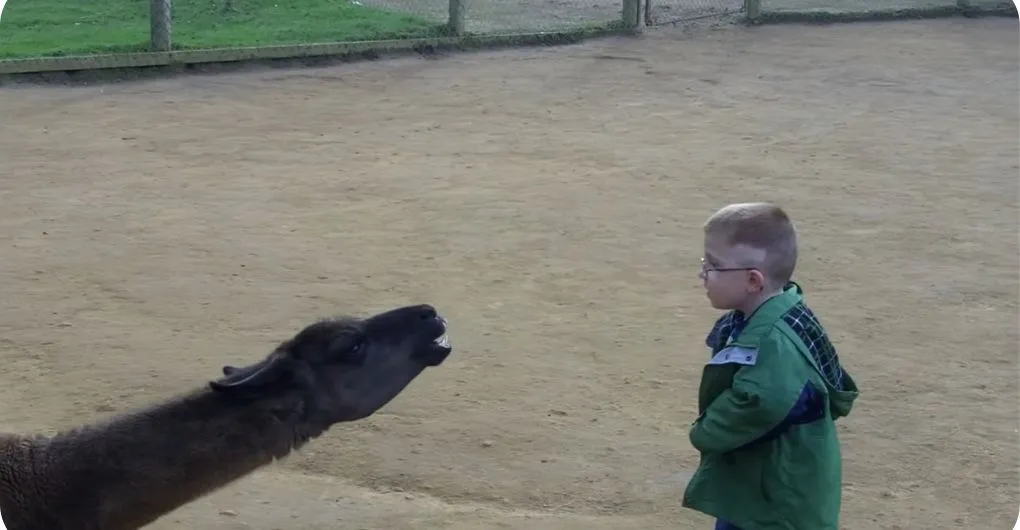
Why Do Llamas Spit In Your Face?
Spitting isn’t just limited to alpacas though; Llamas spit for the similar reasons as the alpacas spit. Just like their cousins alpacas, llamas are known to engage in similar behaviors when they feel threatened by a perceived threat in their environment.
Llamas might look sweet and cuddly, but they’re quite formidable creatures capable of defending themselves with their intimidating size and strength – not to mention the occasional well-timed spit!
To put it simply, if you find yourself facing down an angry llama with bared teeth and bulging eyes, then you’d best back off before it decides to take matters into its own hands…and mouth!
Do Alpacas Spit Acid?
Alpacas are known to spit, but do they produce a dangerous substance? Interestingly enough, alpaca saliva is not acidic – meaning there isn’t any evidence that suggests the animals can spray a toxic liquid from their mouths!
What does seem to be true about alpaca spit is its ability to help create social bonds between members of the herd. Studies indicate that if one animal spits at another, both will often respond with mutual grooming behaviors like nuzzling and nibbling on each other’s fur. This could suggest that alpacas spit as part of a ritualistic display meant to strengthen relationships within the group.
Can Alpaca Spit Blind You?
Alpacas spit to show discomfort or affection. But can alpaca spit blind you? Because if it does, then you might not want this kind of affection.
The answer to whether or not alpaca spit can blind someone depends on how close one gets when the animal spits. Though it may seem like it could hurt if sprayed directly in your eyes, most experts agree that this isn’t likely because alpacas typically don’t shoot out saliva very far from their mouths.
However, if you get too close while an alpaca is expressing its displeasure through spitting, there’s still potential for some discomfort due to particles traveling through the air and landing in your face or eyes. In addition, spraying saliva near someone’s face might irritate due to any bacteria contained in the saliva itself.
How Often Do Alpacas Spit?
Alpacas are known to be relatively placid creatures, but they can still be feisty and aggressive when it comes to protecting their territory or establishing a social hierarchy. The frequency of alpaca spit depends on the context — it could range from frequent spits during territorial disputes between males to occasional spits within herds as part of an established hierarchical order.
These findings suggest that while alpaca spit isn’t necessarily a common occurrence in all herds, and as I explained before it serves an important purpose when used by these animals to protect themselves or resolve conflicts amongst each other.
How Far Can Alpacas Spit?
Well, the answer varies depending on the alpaca and its age. Usually, an adult alpaca can shoot saliva up to several feet away.
If you want the answer to this question as the purpose to tease the alpacas while maintaining the safe distance from it’s spit, then I will suggest you that this isn’t just about self-defense or warning others of danger. And if you, do not adhere to this warning, they may resort to violence. So while you might find it funny when your pet alpaca spits at you out of annoyance, remember that it’s trying to communicate something very specific!
Do Alpacas Bite?
Alpacas are known for their sweet, gentle nature and usually don’t bite. However, they do rely on other methods of communication to express displeasure or fear, and that you already know if you read this post from above. Spitting is a behavior that alpacas employ as an instinctual response to stress and anxiety and can be used to show submission to another animal in the herd or even displeasure with humans.
How Do Alpacas Show Affection?
Alpacas, like many other animals, show affection in a variety of ways. While the most common form of alpaca affection is gentle nuzzling and cuddling with one another, their unique behavior can also include spitting.
While alpaca’s spit is a sign of discomfort, in some cases, however, alpacas may choose to use their spit as a way of expressing love towards their family members or close friends. This usually occurs between two bonded individuals who have formed strong relationships over time.
As strange as it may sound when two alpacas are deeply connected they will sometimes engage in friendly ‘spit playfights’ which gives them the same kind of joy and pleasure that humans experience when playing games with each other. So while spitting has traditionally been seen as negative behavior, in certain circumstances it can be an indicator of deep affection between two alpacas!
Why Do Alpacas Spit At Each Other?
Transitioning from the last section, one may wonder why alpacas spit at each other. The answer lies in the animal’s instinct to communicate and express dominance or anger.
Some alpacas are known to perform ritualistic behavior such as “spitting circles” when together; this reinforces social bonds among herd members allowing them to feel secure amongst one another.
On the other hand, when an alpaca feels angry or threatened by someone else in its group, it will often resort to aggressive spitting at that individual as a form of communication.
Spitting in this instance functions both as a signal of submission and dominance while also providing comfort to those involved through physical contact and body language cues like eye contact and head nodding.
How To Know When Alpacas Or Llamas Will Spit?
Being able to identify when an alpaca will spit can help you protect yourself from being on the receiving end of this unpleasant experience!
When it comes to detecting when your alpaca might be about to spit, several signs may indicate they’re ready to do so.
When They Raise Their Head High
If an alpaca feels anxious or threatened in any way, it may begin to show certain physical cues like raising its head high and sticking out its tongue before actually spitting.
When They Start Gnashing Their Teeth
Moreover, if another animal approaches too close for comfort then your alpaca may start gnashing their teeth and making loud noises before spitting at them.
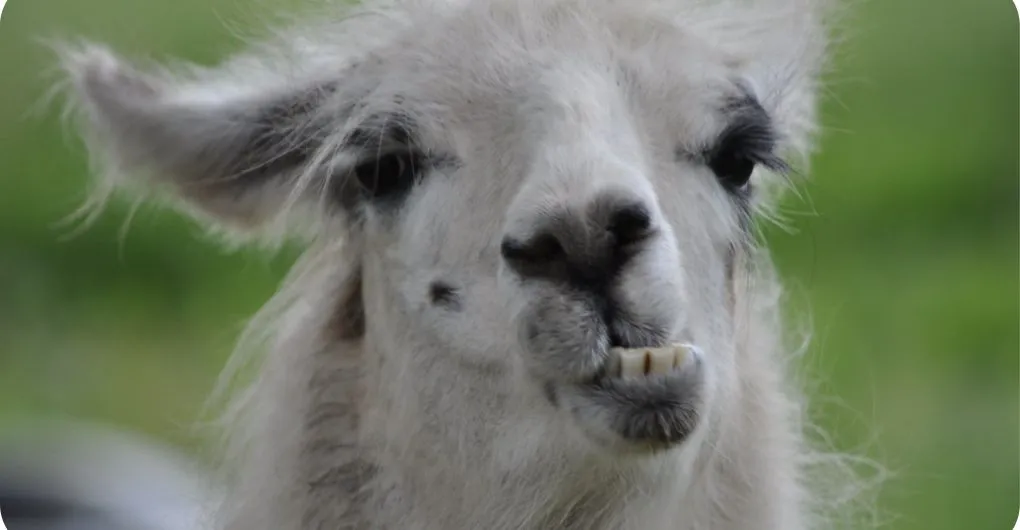
When They Appears Agitated
And most importantly, if you notice that your alpaca appears agitated by something else in their environment – say a loud noise or bright light – they could also attempt to express their displeasure by spitting at whatever has made them uncomfortable.
How To Avoid Alpacas Or Llamas Spitting At You?
Here are some tips on how to avoid an alpaca or llama spitting at you:
- Be aware of your surroundings and keep a safe distance between yourself and any alpacas or llamas.
- Don’t approach them aggressively; instead, move slowly and calmly when interacting with them.
- Respect their space by not entering into areas where they feel threatened or uncomfortable.
- If an alpaca or llama begins to show signs of aggression such as snorting, stomping its feet, raising its head high, etc., back away slowly until the animal relaxes again.
Do Alpacas Spit More Than Llamas Or Camels?
Alpacas are more prone to spitting than both llamas and camels, likely due to their smaller size and higher levels of aggression towards intruders.
Why Do Alpacas Spit? Final Thoughts
I hope this post clears your doubts about why do alpacas spit? From what we’ve learned here today, alpacas and llamas spit for a variety of reasons. It’s not always because they’re mad or trying to get rid of something that doesn’t belong in their mouth!
And while it’s no fun when an alpaca spits at you, there are ways to avoid getting caught in the crossfire. And as far as which animals do more spitting, I have to say that alpacas and llamas definitely win out over camels. If you liked this post, share with your friends so that they can also know the great spitting behavior of these creatures.

